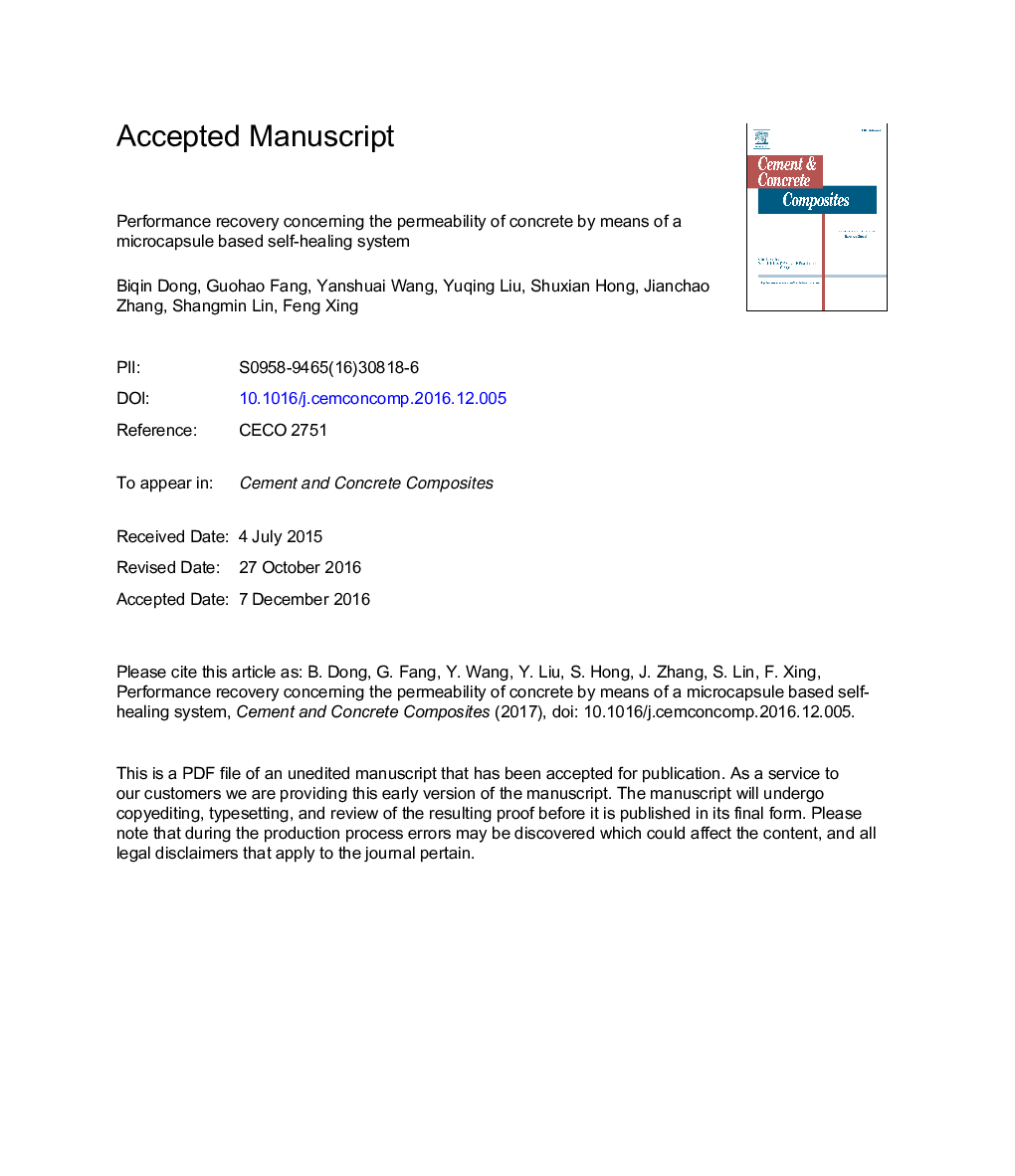| Article ID | Journal | Published Year | Pages | File Type |
|---|---|---|---|---|
| 5436927 | Cement and Concrete Composites | 2017 | 43 Pages |
Abstract
This paper presents work toward the development of self-healing materials that hold promise for permeability healing of concrete or other cementitious composites. To achieve this innovative system, Urea-formaldehyde/Epoxy microcapsule was designed and synthesized by an in-situ polymerization method, using epoxy resin E-51 as the curing agent and urea-formaldehyde resin as the shell material. The viability of microcapsule and the influence of microcapsules on mechanical properties of specimens were investigated first. The breakage of microcapsules upon cracking and the crack-healing results were verified by SEM/EDS. Self-healing capacity was evaluated by crack-healing effect and chloride permeability. The experimental results shown that the chloride diffusion coefficient decreased from 8.15 to 6.53 (Â ÃÂ 10â12Â m2Â sâ1) after 28-day healing. The healing efficiency of permeability increased to a maximum level of 19.8%. It was also noticed that several factors such as the amount of microcapsules, particle size, healing age, curing temperature and pre-load level have great influences on the self-healing efficiency.
Related Topics
Physical Sciences and Engineering
Engineering
Industrial and Manufacturing Engineering
Authors
Biqin Dong, Guohao Fang, Yanshuai Wang, Yuqing Liu, Shuxian Hong, Jianchao Zhang, Shangmin Lin, Feng Xing,
